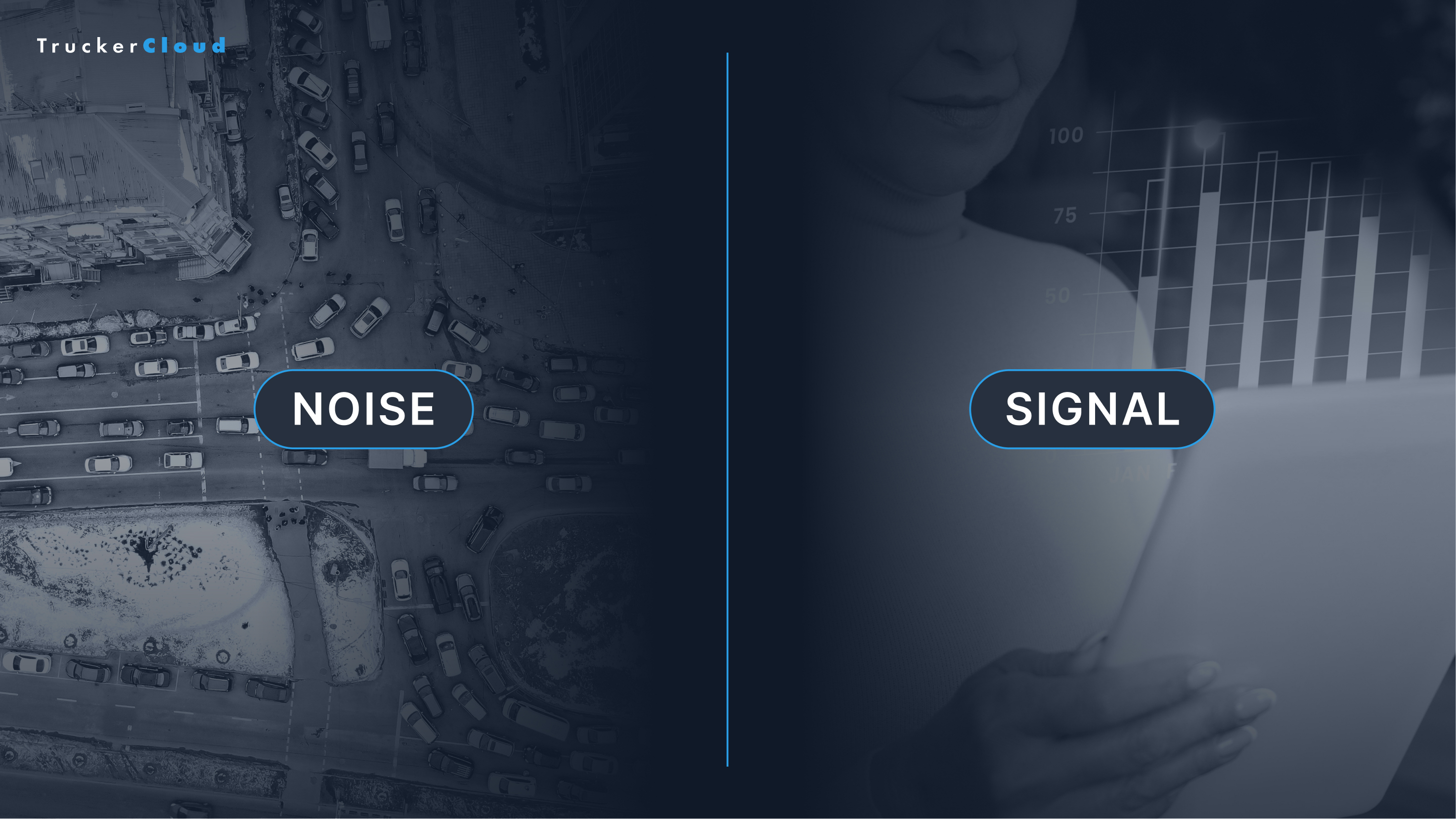“Signal-to-Noise Ratio" in Telematics: A Guide to Effective Fleet Data Analysis
In audio engineering, the “signal-to-noise ratio” is a critical measure of clarity. It’s the difference between hearing a crisp, clear voice and hearing that voice drowned out by a static hiss.
This exact concept has powerful implications for fleet data analysis.
Telematics systems generate a constant torrent of information, but not all of it is meaningful. For fleets and insurers, the challenge isn’t a lack of data; it’s the overwhelming presence of “noise” that obscures the “signal”.
The core problem in fleet management is data clutter. Every trip produces thousands of data points, from routine speed updates to minor GPS adjustments. Most of this is simply distracting noise. The value lies in identifying the meaningful fleet data, AKA the critical events that signal risk, reveal inefficiency, and provide actionable insights. This requires a shift in perspective from quantity to quality-based fleet data analysis.
What Do We Mean by “Signal” vs. “Noise”?
Understanding the difference between the signal and the noise is the first step toward focusing on what truly matters for your operations and improving your fleet data analysis.

The Noise
“Noise” in this context is the constant, overwhelming stream of low-impact information. This includes the endless data points from a truck driving perfectly down the highway, slight GPS corrections, and other irrelevant data. Drowning in the noise makes it hard to hear the messages that count.
The Signal
“Signals” are high-value informational tidbits that cut through the static with purpose. It’s the specific alert about a critical safety breach, a significant maintenance issue, or a pattern of wasteful driver behavior. These signals are your key performance indicators—the actionable moments that allow you to make targeted improvements to your operation.
Identifying Signals in Your Fleet Data
Let’s look at what these critical signals often are and why they matter more than the surrounding noise:
- Harsh Braking & Acceleration Patterns: A single harsh braking event might be noise. However, a pattern of these events for a specific driver is a clear signal of tailgating or aggressive driving, which is a significant indicator of accident risk.
- Idling Time Over 5 Minutes: Tracking every instance where a vehicle idles for more than a set threshold is a powerful signal that points directly to wasted fuel and unnecessary emissions.
- Speeding Violations: An alert for driving 15+ mph over the limit or consistently speeding in a school zone is acritical safety issue that demands immediate attention.
Strategies for Improving Your Signal-to-Noise Ratio
Effectively separating signal from noise requires more than just collecting data; it requires a strategy for telematics data filtering. The goal is to create a system that intelligently surfaces what’s essential. Here are a few ways to sharpen your fleet data analysis:
- Establish Smart Thresholds: Work with a system that allows customization of alerts. Establish what is critical for your fleet. This ensures you are only notified about deviations that truly matter, cutting down on insignificant pings.
- Focus on Trends: Leverage tools that aggregate data into trends and driver scores. A weekly report showing a driver’s declining safety score is a much stronger signal than a dozen individual alerts.
- Demand Context: A harsh cornering event is more significant if the vehicle is speeding. Data without context is often just noise; data with context becomes actionable insights. The best data platforms provide context.

Why Filtering is Non-Negotiable
Failing to separate the signal from the noise has significant consequences. When fleet managers are overwhelmed by a constant stream of irrelevant alerts, they tune them out. This “alert fatigue” means critical events, or the actual risk signals, get missed.
This directly impacts:
- Safety: Safety risks, such as harsh braking or speeding patterns, are lost in the static of inconsequential notifications.
- Efficiency: Cost-saving opportunities, such as identifying and reducing excessive idling across a fleet, are buried under mountains of routine trip data.
- Operational Costs: Without clear signals, preventative maintenance becomes reactive, leading to increased vehicle downtime and higher repair costs
TruckerCloud’s Approach: Amplifying the Signal
At TruckerCloud, our entire platform is built on maximizing the signal-to-noise ratio. We believe that the power of telematics is unlocked not only by providing thorough data, but by giving the correct data, with context, at the exact moment it’s needed.
Our platform fuses data from your ELDs, cameras, and TMS to provide contextual data instead of just isolated alerts. This transforms raw telematics information into a clear signal, enabling stronger fleet data analysis that gives your team everything it needs to make smarter decisions that boost safety and profitability.
Ready to Cut Through the Noise?
Let us show you how to amplify your signal. Schedule a demo to discover how TruckerCloud’s intelligent platform can clarify your fleet data analysis and help you make smarter decisions that boost safety and profitability.



